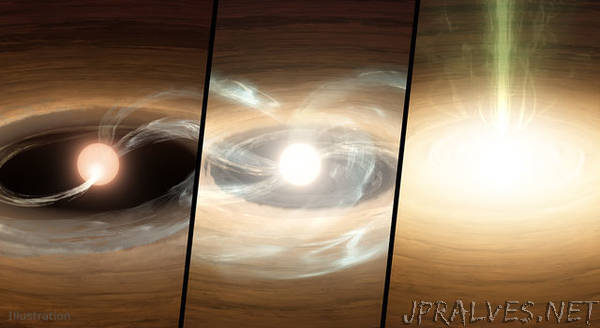
“An adolescent star in the midst of a dramatic growth phase has been observed with the help of two NASA space telescopes. The youngster belongs to a class of stars that gain mass when matter swirling around the star falls onto its surface. The in-falling matter causes the star to appear about 100 times brighter. Astronomers have found only 25 stars in this class, and only about half of those have been observed during an outburst.
The new findings shed light on some long-standing mysteries surrounding the evolution of young stars, including how they acquire all of their mass. This rarely observed outbursting behavior could be common but might typically be hidden from our view by thick clouds of dust.
The newfound star, called Gaia 17bpi, was first spotted by the European Space Agency’s Gaia satellite, but NASA’s asteroid-hunting Near-Earth Object Wide-field Infrared Survey Explorer (NEOWISE) satellite serendipitously observed the star’s brightening at the same time that Gaia did. Additional searches in NEOWISE’s data archives and the archives of NASA’s infrared-sensing Spitzer Space Telescope showed that these spacecraft had detected the flare-up in infrared light more than one year earlier.
You can read the full story from the Caltech news office here. Caltech manages the Jet Propulsion Laboratory in Pasadena, California, for NASA. The research is detailed in a new study titled “Gaia 17bpi: An FU Ori Type Outburst.”
JPL manages and operates the NEOWISE mission for NASA’s Planetary Defense Coordination Office within the Science Mission Directorate in Washington. JPL also manages the Spitzer Space Telescope mission for NASA’s Science Mission Directorate in Washington. Science operations are conducted at the Spitzer Science Center at Caltech in Pasadena, California. Data are archived at the Infrared Science Archive housed at IPAC at Caltech.
“
